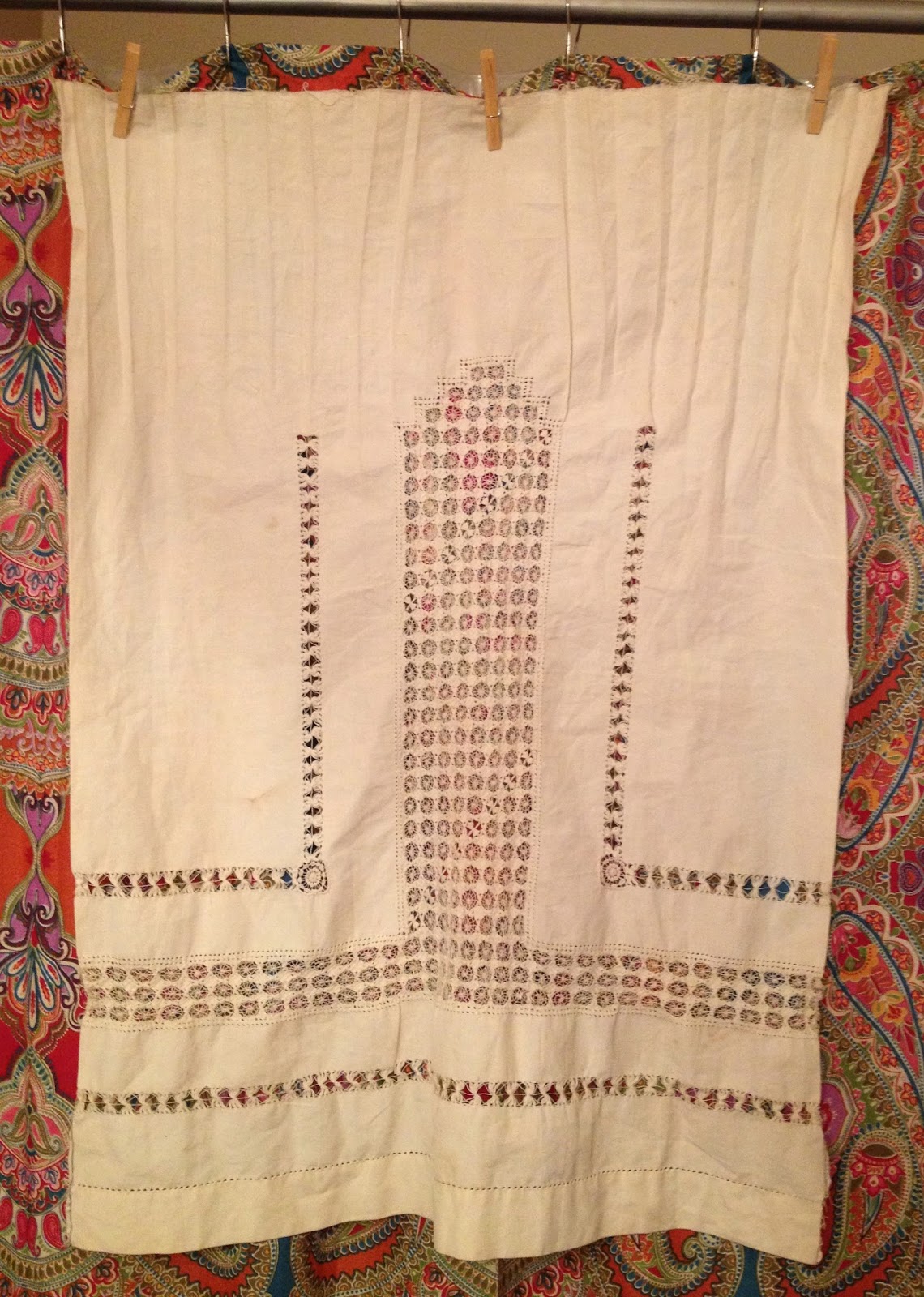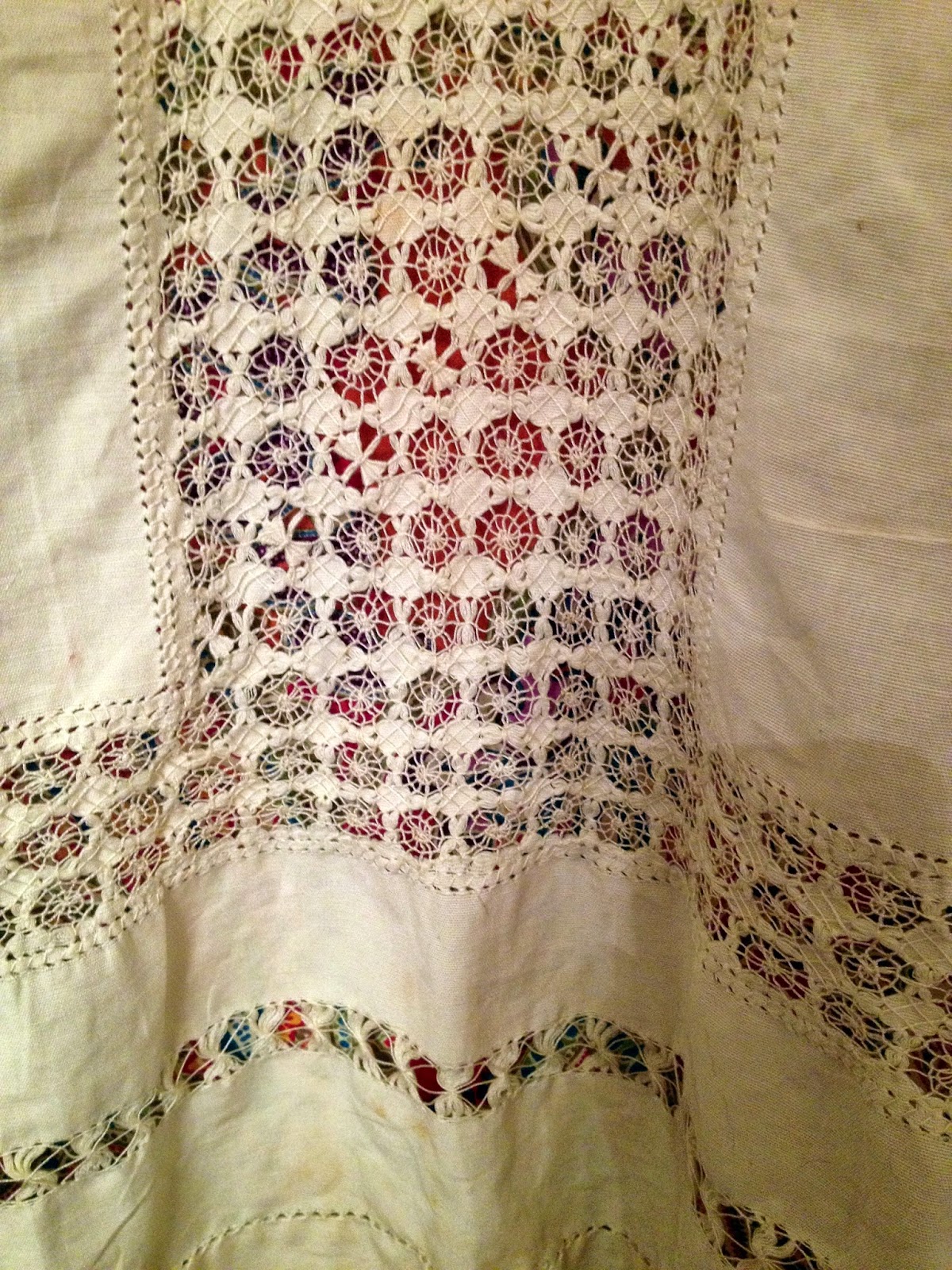Simplicity 3809 was a great pattern. Very easy to make, but very time consuming to construct because you have to cut the bodice pattern in triplicate (fashion fabric, interlining, lining). The instructions were very clear and I had no problem following them. It may have helped that I've sewn princess-seamed bodices before--my favorite sundress pattern is New Look 6457, which has a fitted bodice. I've made up that pattern five times!
Other reviewers have also praised this pattern, but have noted that the shoulder straps are too long. They're right about that. The shoulder straps overlapped by a couple of inches on my bodice. Since they are supposed to be set with grommets and held together with a ribbon, this would be a problem.
I'd like to note that one blogger who made this pattern stated that there was a mistake in the instructions, because Simplicity said to cut out three panels for the skirt. She said you only need to cut out two. She is mistaken though, because if you cut out only two panels for the skirt, you don't have the fullness to make this skirt look right. It just looks cheap and flimsy if you only cut out two panels for the skirt. So please follow the instructions as given with the pattern.
Here's how it worked out for me. It looks fine, I suppose. I just pushed myself too hard to finish it and ended up hating it. It also doesn't look like a pirate or musketeer outfit like I'd envisioned.
Looking good so far! But...
 |
| Shiiiiiit... |
And the back waist is too long. I'm very short waisted. The bodice fits perfectly in the front, so I didn't expect it to be too long in the back, but there you have it. There's also no fix for this that doesn't involve taking apart the bodice, and I don't love this enough to do that. It would have looked so much better if I'd shortened the back waist, which I would have known I needed to do IF I'D JUST MADE A MUSLIN FIRST.
I'm totally bummed that I spent so much money on the trim for this costume, but that's the way it goes sometimes. Maybe I can use it on an 18th century riding habit. If I'm going to spend this much time and effort on costumes, I'm going to start using historical patterns.
The skirt on this pattern is awesome and it looks so nice made up in this burgundy poly-silk fabric.
I'm really glad I didn't trim the skirt. I can use it for something else. I have a beautiful golden-tan cotton tapestry fabric with floral trim in pinks and burgundies, and I think it would look amazing made up into a curaco jacket and paired with this skirt. The skirt isn't made in a historically accurate fashion, but it will do for a Renaissance festival and at least it won't go to waste.
























